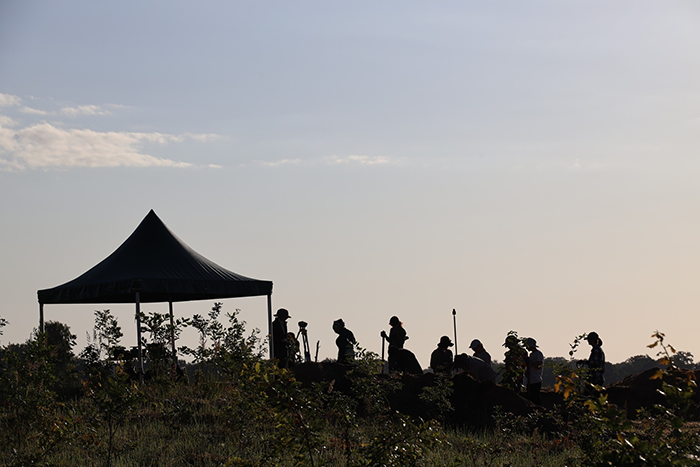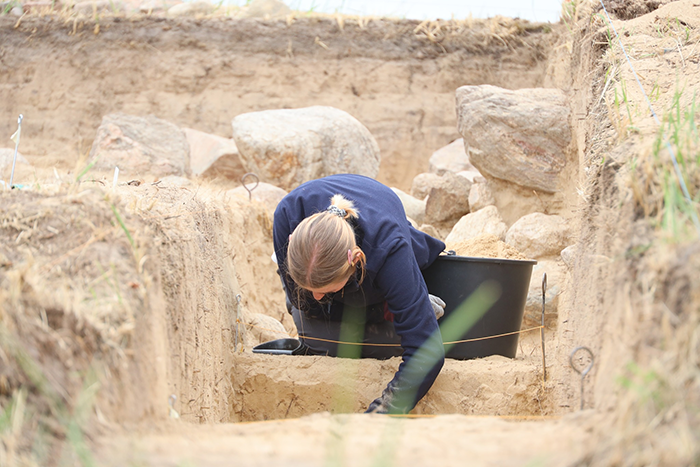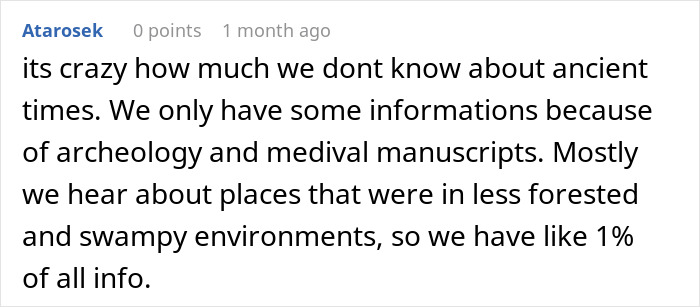Every country has historical monuments that it is incredibly proud of. The Egyptians have the pyramids and the Sphinx, the Greeks have the Acropolis and Olympia, the Italians have the Colosseum, the Chinese have the Great Wall of China… the list goes on and on. So today, we’ll talk about the Poles and their historical finds.
A whole group of large burial mounds was recently discovered in Poland, which sensation-hungry journalists have already dubbed the “Polish Pyramids.” How true is this – and isn’t it time for all lovers of antiquity to book tickets to Warsaw? Let’s figure it out together.
More info: Facebook
Archaeologists recently unearthed huge prehistoric burials in Poland, immediately dubbed “the Polish Pyramids”

Image credits: Zespół Parków Krajobrazowych Województwa Wielkopolskiego / Facebook
In fact, there were no classic pyramids, just big earthen mounds belonging to neolithic culture
Of course, these are not pyramids in the classical sense of the word – they are not as majestic as the colossal burial structures of ancient Egypt or Mexico. They are not even pyramids from a geometric point of view – since they’re more like trapezoids. But the burials found in Poland are actually much older than any pyramids.
Yes, that’s right. The find, made by a team from Adam Mickiewicz University on the territory of General Dezydery Chłapowski Landscape Park in the central part of the country, includes large (around 650 feet long and 13 feet high) trapezoidal earthen structures in front of the entrance to which there are several stone monoliths – apparently, thousands of years ago, they served as an entrance.

Image credits: Getty Images / Unsplash (not the actual photo)
However, the age of these mounds is way more than that of any Egyptian pyramids as they date back to 5.5 thousand years ago
According to archaeologists, these burials date back to the late Stone Age, that is, about 5.5 thousand years ago – so, nearly a thousand years earlier than the oldest of the Egyptian ones – the Djoser pyramid. If we compare the Polish finds in size to that pyramid, the Egyptian one is more than ten times higher, but the size of the base of the Polish mounds is larger.

Image credits: Zespół Parków Krajobrazowych Województwa Wielkopolskiego / Facebook
Of course, the level of cultural development in Egypt and Europe at that time was incomparable – simply due to the fact that the climatic conditions in the south were way more favorable for agriculture. After all, Ancient Egypt is part of the so-called “Fertile Crescent” – the lands around the eastern part of the Mediterranean Sea, considered one of the cradles of modern civilization.

Image credits: Zespół Parków Krajobrazowych Województwa Wielkopolskiego / Facebook
So, when the state was already emerging in Ancient Egypt, just a megalithic culture was widespread in the territory of modern Poland and neighboring countries, known today as the “Funnelbeaker culture.” Similar megalithic burials are found in many European countries, but in Poland – until the recent discovery – only one such location was known of. Well, now there are two – and, sooner or later, tourists will take the place of scientists.

Image credits: Zespół Parków Krajobrazowych Województwa Wielkopolskiego / Facebook
The discovery was made using the remote sensing technology before actually doing the earthwork
Interestingly, the study was conducted using the latest technology – that is, scientists used advanced remote sensing technology during the earthwork. Having discovered the first traces of the burial, they specified the location of the upcoming excavations using aerial laser scanning – and only then did the good old spades come into play.

Image credits: Zespół Parków Krajobrazowych Województwa Wielkopolskiego / Facebook
Probably the “Polish pyramids” were the final resting place of some of the civil or religious leaders of prehistoric society
Now it remains to be seen who exactly found their final resting place in the “Polish Pyramids.” And it’s quite possible that the main finds at the excavation site are still to come. At least, based on the results of excavations of similar burial mounds in other countries, we can expect interesting finds to shed light on the lives of the people of prehistoric Europe.
”Although Funnelbeaker cultures were quite egalitarian societies, the tombs held important figures for the community – leaders, priests, and shamans,” Polish media Nauka w Polsce quotes Artur Golis as saying, a chief specialist for nature and landscape protection from the Landscape Parks Complex of the Wielkopolska Voivodeship. “Each generation of a given community built its own megalith.”
Be that as it may, the Polish find is a completely truthful, though not sensational, discovery, which can in no way be compared to the notorious “Bosnian pyramids” – a well-known falsification of the mid-’00s, when a local archaeologist passed off ordinary natural flatiron hills as the monuments of an ancient civilization. Here, everything is much simpler, but that’s all the better.
However, people in the comments couldn’t resist using sarcasm, recalling, of course, both the “Bosnian pyramids” and the desperate attempts of many nations to give their own historical monuments global significance, inflating artificial sensations. “Hey Bosnians have the oldest pyramids in the world!” someone “reminded” wittily.
But there were also sensible comments, reminding us how much we still don’t know about the lives of our distant ancestors of prehistoric times. So if the Polish archaeological find can add a couple more grains of knowledge – then all this was not in vain. By the way, what do you, our dear readers, think about this whole story? Please feel free to share your thoughts in the comments below.
Many people in the comments were quite skeptical anyway, reciting some of the notorious “finds” of the past















 Follow Us
Follow Us




